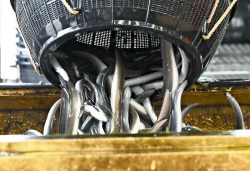14:13 JST, June 19, 2024
WASHINGTON (Reuters) — In 1967, an underground cistern known as a chultun was discovered near a sacred body of water at Chichen Itza, an important ancient Maya city on Mexico’s Yucatan peninsula. Skeletal remains of more than 100 children were found inside.
Now, DNA obtained from 64 of them is offering insight into child sacrifice at Chichen Itza in the centuries before Europeans reached the New World. Those entombed were all boys — some of them brothers, including two sets of identical twins — killed during religious rituals, scientists said on June 12. Most were ages 3 to 6.
Most were interred in the mass grave during the pinnacle of Chichen Itza’s political and cultural clout, from about 800 to 1000, though some were buried in the centuries before and after that, covering a 500-year span ending at around 1100.
Twins figure prominently in ancient Maya religion and art, and sacrificing twins is described in sacred writings, including a book called the Popol Vuh. The Mayan Hero Twins, Hunahpu and Xbalanque, underwent cycles of sacrifice and resurrection as they confronted gods of the underworld. Subterranean structures like the chultun were considered entrances to the underworld, central to Maya cosmogony.
“Ritual sacrifice was a common practice among ancient Mesoamerican populations. However, the biological relationships between the sacrificed individuals had not been described before,” said archaeogeneticist Rodrigo Barquera of the Max Planck Institute for Evolutionary Anthropology (MPI-EVA) in Germany, lead author of the study published in the journal Nature.
“We think that the people from Chichen Itza were trying to symbolically replicate the Mayan mythological stories and the representation of the twin heroes in this ritual burial,” Barquera added. “For Maya, and Mesoamerican cultures in general, death is the ultimate offering, and as such, sacrifices bear high importance to their belief system.”
Chichen Itza is known for its stunning architecture, including an impressive pyramid structure now called El Castillo. Nearby is a sacred water-filled sinkhole called a cenote, where the bodies of more than 200 people were found. And close to that is the chultun where the boys were buried.
“The original purpose of chultuns was to store fresh water. This one had been repurposed into a funerary chamber adjacent to a small natural cave. Both the chultun and the cave were filled with human remains,” Barquera said.
DNA was extracted from the petrous portion of the temporal bone, which houses the inner ear. This small bone has proven optimal in preserving ancient DNA.
“We sampled only the left portion because that would make sure we sampled every individual only once. It was not preserved for every individual in the chultun, therefore we sampled only a subset,” said MPI-EVA archaeogeneticist and study coauthor Kathrin Nagele.
“From the genetic similarities of two individuals, we can calculate the degree of genetic relationship. In this case, we found two pairs who were so similar they could only be identical twins, and at least three more who were full siblings. They could have also been twins, but fraternal twins, coming from two different egg cells,” Nagele said. “This is the first time we are able to confidently identify identical twins in the archaeological record.”
The research contradicted an idea popularized in the 20th century that the ancient Maya preferred female sacrifices.
The researchers also compared the genomes of the boys to those of present-day Maya communities, including people from the village of Tixcacaltuyub near Chichen Itza’s ruins. They identified genetic traits in modern Maya likely arising from immune system adaptations by their ancestors to an epidemic bacterial infection during Spanish colonization.
It remains unclear how the boys died.
“There are no cut marks or evidence of trauma, which tells us how did they not die. But we have not found a cause of death for them yet,” Barquera said.
“During the Spanish colonial period, thousands of Maya books and texts were systematically burned, and there were concerted efforts to stamp out Maya religious beliefs and activities and replace them with Christianity,” said Harvard University biomolecular archaeologist and study coauthor Christina Warinner.
“As a result, there are many gaps in our knowledge about the specific ritual practices performed by the ancient Maya — and especially their meaning,” Warinner added. “Among these, human sacrifice remains one of the most misunderstood ritual acts.”
"Science & Nature" POPULAR ARTICLE
-

Genome Study Reveals Milestone in History of Cat Domestication
-

Big Leap in Quest to Get to Bottom of Climate Ice Mystery
-

Security Camera Footage Vulnerable to Outside Access; Investigation Finds 3,000 Pieces Exposed Online
-

Paws on Parade: Nairobi’s Dogs Dazzle at ‘Pawchella’
-

Japanese Eels Escape New Regulation in Vote at CITES Meeting, Avoiding Higher Prices for Dealers and Diners
JN ACCESS RANKING
-

Keidanren Chairman Yoshinobu Tsutsui Visits Kashiwazaki-Kariwa Nuclear Power Plant; Inspects New Emergency Safety System
-

Imports of Rare Earths from China Facing Delays, May Be Caused by Deterioration of Japan-China Relations
-

University of Tokyo Professor Discusses Japanese Economic Security in Interview Ahead of Forum
-

Japan Pulls out of Vietnam Nuclear Project, Complicating Hanoi’s Power Plans
-

Govt Aims to Expand NISA Program Lineup, Abolish Age Restriction
























